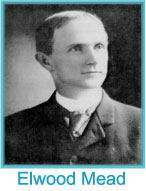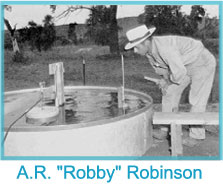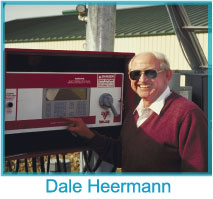| WMR History |

|
History of the Fort Collins Water Management Research Unit
A Century of USDA Irrigation Research in Colorado
(PDF ~2MB)
Elwood Mead's Contribution to Fort Collins Irrigation Programs
Elwood Mead's Role in Founding CSU's and USDA's Fort Collins Irrigation Programs
(PDF ~45KB)
History of the Unit
How it all got started...
 In 1883 Elwood Mead came to Colorado Ag College to teach. He saw a need for research and education in irrigation. he studied why infrastructure worked or failed, and also the "duty of water", i.e. how much was needed for production. Mead became the first irrigation engineer in the US. He later served as the Chief of the Division of Irrigation and Drainage investications, USDA and as commisioner of Reclamation. Lake Mead was named for Elwood Mead. |
 Ralph Parshall, the inventor of the Parshall Flume, was a student and then faculty member of CAC during the early 1900's. In 1910 he joined with Victor Cone, to form the USDA's Bureau of Public Roads, Irrigation Investication Unit in Fort Collins. |
 Carl Rowher joined Parshall and Cone in 1914 and the team studied evapotranspiration, water flow measurement, water well designs and ditch seepage. They formed the nucleus of a continuous chain of USDA scientists that links to the Water Management Unit today. Rohwer became the leader of the research group until his retirement in 1956. |
 Robby Robinson was one of the post WWII GI's to use the GI bill to pursue an advanced degree. He accepted a joint appointment with the USDA and the experiment station, and studied canal seepage and the design of interceptor drains. He took over leadership of the unit on Rowher's retirement. He moved to Kimberly ID in 1963 to open the new ARS lab there. |
 In 1944 Howard Haise began his USDA career in California studying management of a shrub called Guayule to produce economic amounts of rubber for the war effort. Crop water use and automated surface irrigation were among Haise's major research interests. He transfered to Fort Collins in 1954 and retired as Research Leader in 1974. |
 Dale Heermann joined ARS in 1968, followed soil physicist Arnold Klute as Research Leader of the Water Management Unit in 1981 and just recently retired but still serves for the unit. Heermann shared Haise's interest in automated irrigation, but extended that concept to include modeling the hydraulics and water distribution under center pivots, and automating them using computers. He expanded the Water Management Unit beyond irrigation into precision farming, and the group now includes weed science and remote sensing. |
User-friendly URL: /npa/ftcollins/WMRHistory
